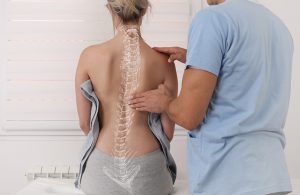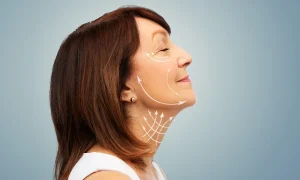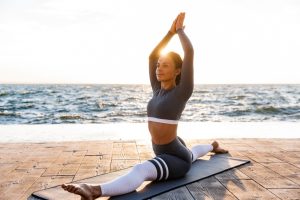Pilates is a low-impact exercise program that focuses on strengthening the core, improving posture, and promoting mind-body awareness. Whether you are looking to improve your physical health, relieve stress, or simply want to try something new, mat Pilates is a great option to consider. We will cover everything you need to know to get started with Pilates, including recommended exercises and modifications for beginners.
Recommended Exercises for Beginners
- The Hundred: This exercise is a staple in Pilates and a great place to start for beginners. It works the entire body and improves core strength, flexibility, and coordination. To perform the Hundred, lie on your back with your knees bent and feet flat on the ground. Reach your arms straight up and pulse them up and down for 100 counts, keeping your core engaged and your neck relaxed.
- The Roll-Up: The Roll-Up is a great exercise for strengthening the abs and improving flexibility. To perform the Roll-Up, lie on your back with your legs straight up in the air and your arms reaching toward your toes. Slowly lower your arms and upper body to the ground, keeping your legs straight and reaching for your toes. Then, use your abs to slowly roll back up to the starting position.
- The Single-Leg Circle: This exercise works the hips and legs and improves balance and stability. To perform the Single-Leg Circle, lie on your back with your legs extended in the air. Reach one leg up and make small circles with the toe, keeping the other leg straight. Repeat on the other side.
Modifications for Beginners
- Modify the intensity: If you are new to mat pilates, you may want to start with gentler exercises and gradually increase the intensity as you become more comfortable. You can also modify the intensity by using lighter weights or reducing the range of motion for certain exercises.
- Use props: Pilates props like resistance bands, foam rollers, and Pilates balls can help make exercises easier or more challenging. For example, you can use a resistance band to add resistance to your arm movements, or a foam roller to support your back during exercises like the Roll-Up.
- Focus on form: Pilates is all about proper alignment and controlled movements, so it’s important to focus on form over speed or intensity. Take your time with each exercise and don’t be afraid to take breaks if you need to. As you become more familiar with the movements, you can increase the pace and challenge yourself further.
- Work with an instructor: While Pilates can be done at home, it can also be helpful to work with a certified Pilates instructor, especially if you have any physical limitations or concerns. An instructor can help you learn the proper form, suggest modifications and progressions, and design a Pilates program that is tailored to your individual needs and goals.





More Stories
Effective Ways to Manage Spinal Curvature in Adolescents
Enhance Your Culinary Experience: Pairing Cannabis Strains with Local Flavors
How to Choose the Right Cheek Filler and Factors to Consider?